After a game on the Dunluce we spent the weekend playing the Valley Links and this was the course I was most looking forward to seeing while on this trip. One gets a view of the Valley from a few spots (especially from Calamity Corner) playing the Dunluce on the high ground and it does look stunning with its fairway strips cutting through dunes. The first impression is there will be a lot of turning back on oneself and playing adjacent fairways. Usually this type of routing gets up the noses of critics, but Colt cleverly brings us through small hollers which act as dividers. One will notice that a great deal of the greens are placed at the base of dunes which create a sense of seclusion even though tee to green many holes are open. Additionally, Colt tended to route a few holes in one direction then turn about rather than going in one direction for several holes. The Valley Links is easier than the Dunluce by keeping this routing system throughout the design. Essentially, the course runs either east or west, avoiding cross wind shots which are rife on the big links. Another aspect which makes the course easier than the Dunluce is the green surrounds are not quite as demanding. That isn't to say there isn't terrific variety because there most certainly is - probably more so than on the the Dunluce. Finally, the Valley is fairly short, but it steals shots from par by reducing the number of par 5s. This is a very common characteristic of British courses which makes courses feel as though they play longer than the card suggests. In this way Colt takes full advantage of our pre-occupation with the concept of par. Similar to Woodhall Spa, it is probably easier to play to one's handicap by stepping back to the medal tees because the par of 68 is increased by two shots, yet only 250 yards are added to the card.
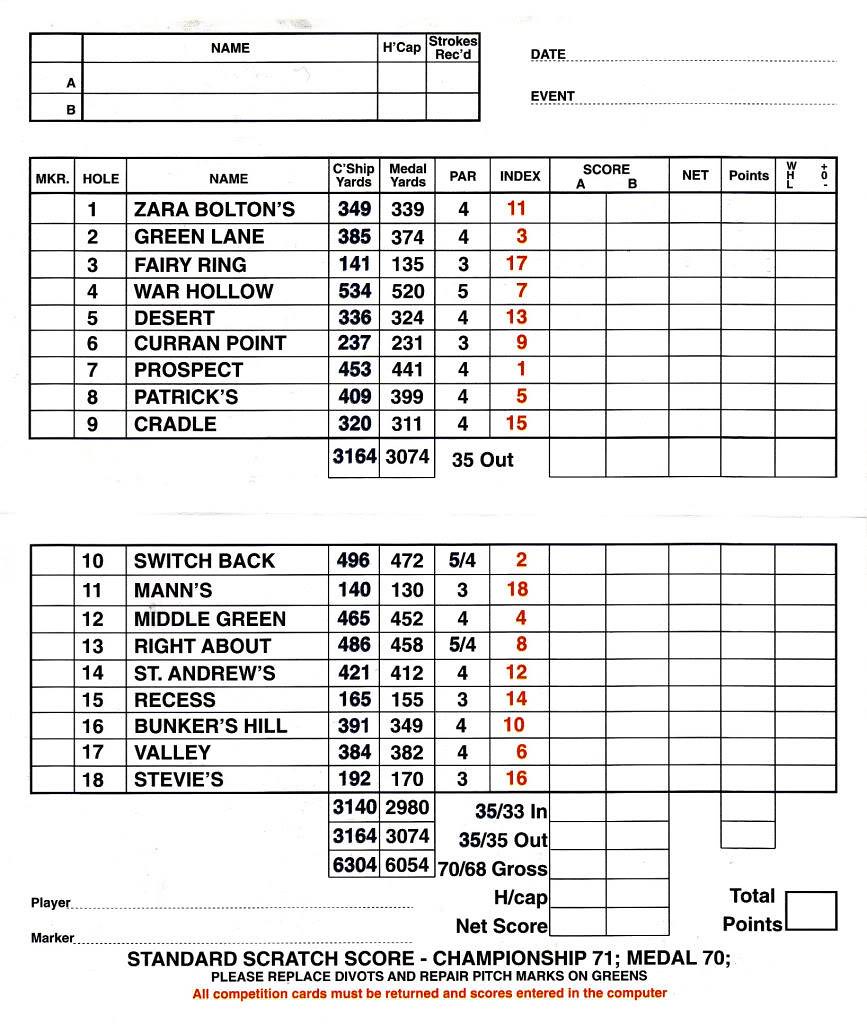
The opener is a gentle one which eases us into the round. In truth, it is one of the weakest holes on the course. After starting at about the same height as the Dunluce Links, the second plunges to the base of Dunluce's 17th and in fact shares a fairway with this hole. One must be careful with club selection and line as it is easy to end up on the bank of the 17th tee. The hole then turns hard left to a deceptive green which is difficult to figure out because of the offset bunkering. The green runs away from the fairway until about 1/3 of the back, then the green rises. From here one can see the advantage of staying left off the tee.
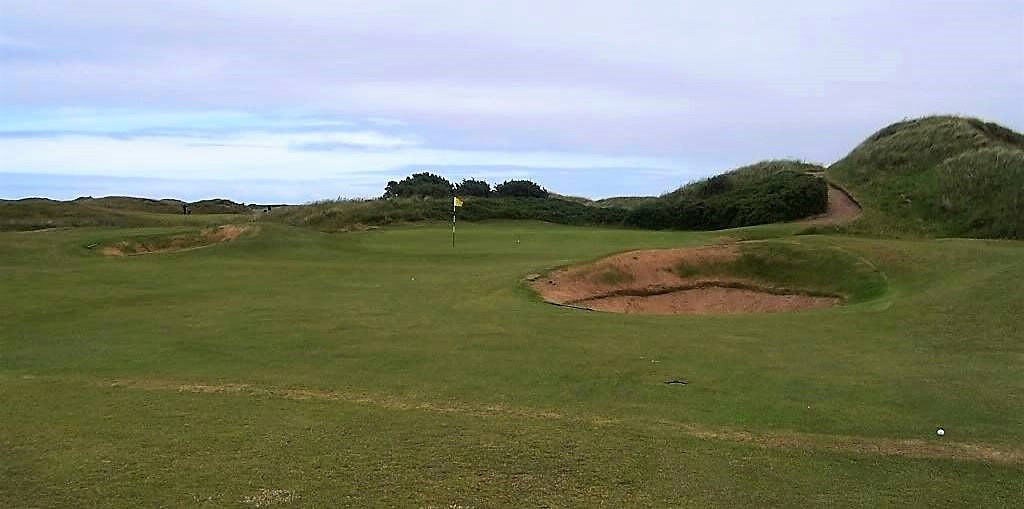
For the third we climb back up to higher ground, but well below the Dunluce Links for a drop shot par 3. I wasn't impressed with the short holes as a group mainly because three are drop shots.
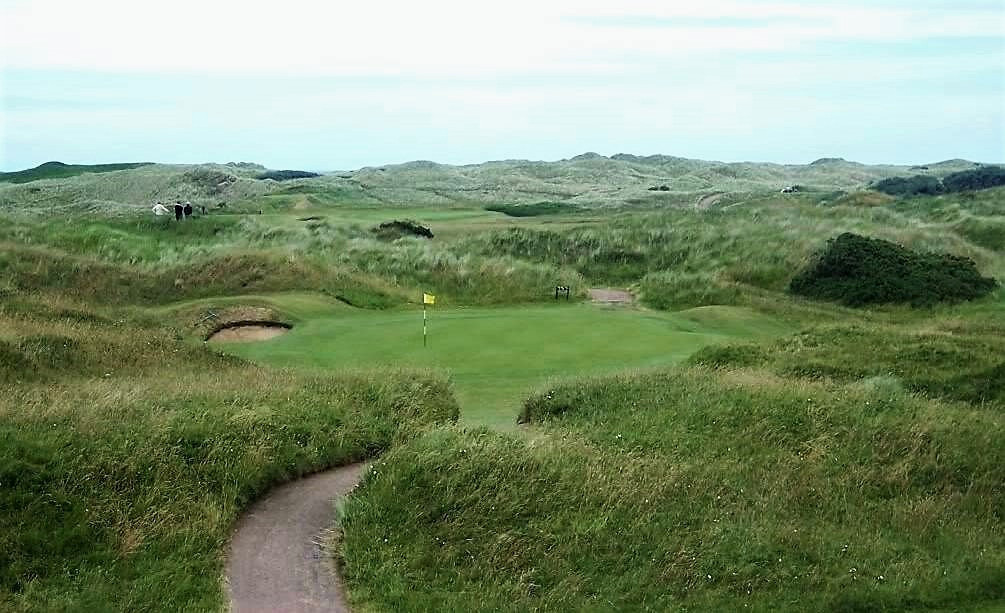
The fourth takes us to higher ground for a mediocre par 5. Thankfully, this is the last of the mundane par 4s or 5s. For me, the course really comes alive on the 5th and 6th. These are located in their own holler and are a magnificent pair of holes. They total 573 yards, yet to cover them in the combined par of 7 shots is good going. I don't really know how to play the 5th. The bunkers are reachable with the prevailing tailwind, but one still feels as though he wants to get as close to the bunkers as possible. Besides the troubling fairway bunkers, the green site is a thing of beauty. Extending from the back of the right bunker is a ridge leading to the green which is the very narrow kick in path. The green falls away right and left. If it wasn't for the next hole, this may be the most precision oriented approach on the entire 36 holes. Coming in from the left is DEAD.
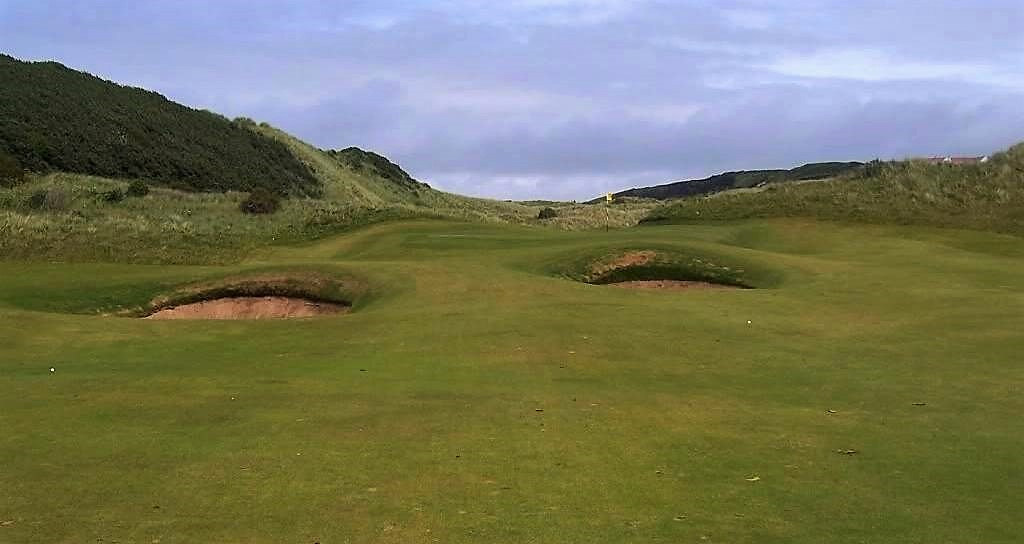
After the head scratchingly brilliant 5th we turn back into the wind for a monster par 3. I thought the approach on the previous hole was tough, but at 237 yards this hole makes the previous one look a doddle. Nothing short of a laser guided (for me - driver) will find this green. I initially complained about no realistically reachable par 4s on the course, but there is, only its a par 3. I also didn't like the idea of no bailout while playing the hole, but now I am not sure there should be some easy option left.
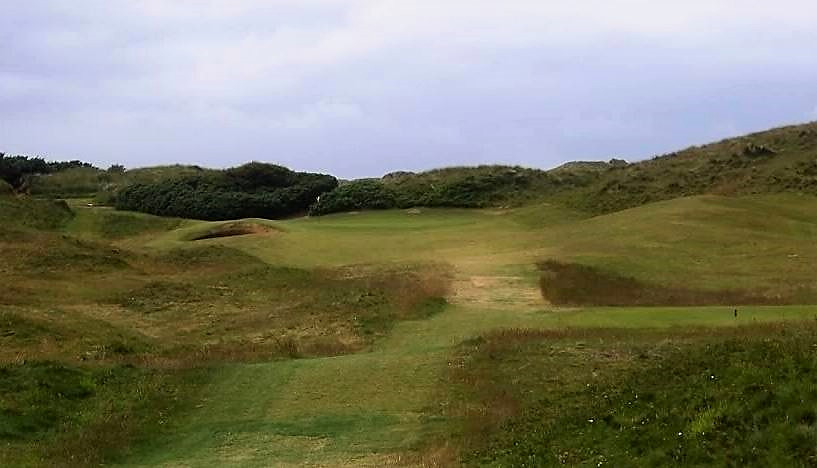
The theme of half par holes continues on the 7th - a long par 4 into the wind which will not be reachable for most if there is a breeze about.
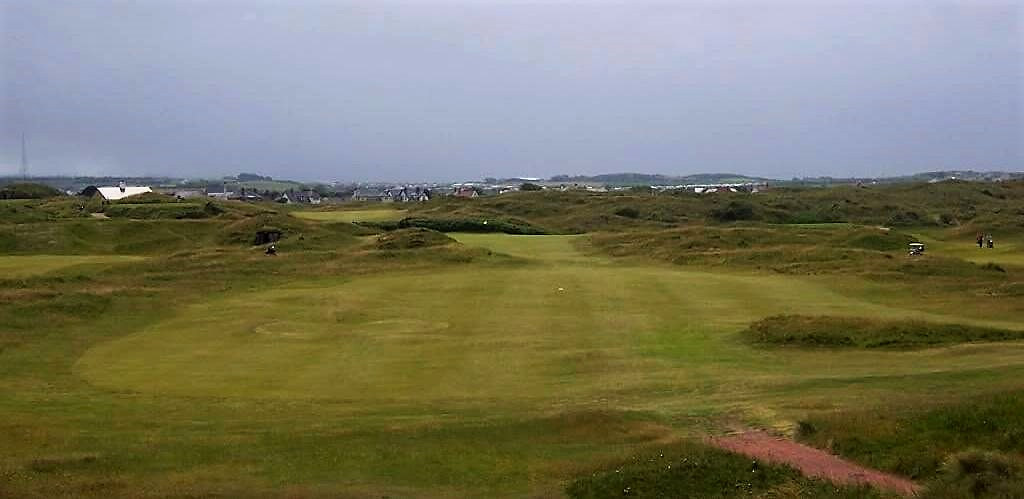
A disorienting hole due to the obscured nature of the drive. One needs to keep it well right on the 8th, but the edge of the fairway can't be seen. What can be seen is a dune which looks to be reachable. A this point the fairway drops and angles awkwardly. Below is the approach from the perfect position.

The ninth is the third of an excellent cast of short par 4s. Once again, the fairway angles oddly at the driving zone, but there is plenty of scope to lay up, Like the 8th, one must keep to the right for a view of the green.
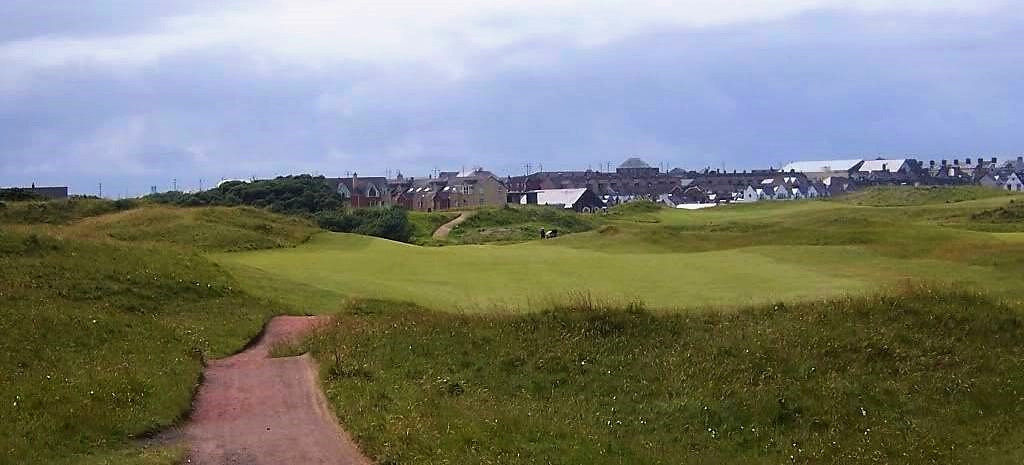
By now it should be clear to the reader that Colt was determined to use the natural features as defenses rather than employ sand. On approaching the 9th we have a combination of playing into the wind and the hollow short of the green which must be carried that gives us all the interest and challenge we could crave.

The 10th is probably the most memorable and controversial hole on the course and is in the same vein as Calamity Corner - heroic. A glance at the card will reveal that this is one of the par 4/5 holes which will get into the heads of most golfers. On the first day we played it as a par 4 - most said it was impossible. On the second day we played it as a par 5, most said it was great. Go figure. In any case, I found playing from the back tee far easier because it is raised making the the 9th fairway visible. I don't know why anyone would play the 10th fairway from the medal tees. It leaves absolutely no angle to the green whereas from the 9th fairway it sets up perfectly. The fairway is split by rough and and a steep drop. At this point the blind approach is over a heaving roller-coaster of an elephant's graveyard fairway.
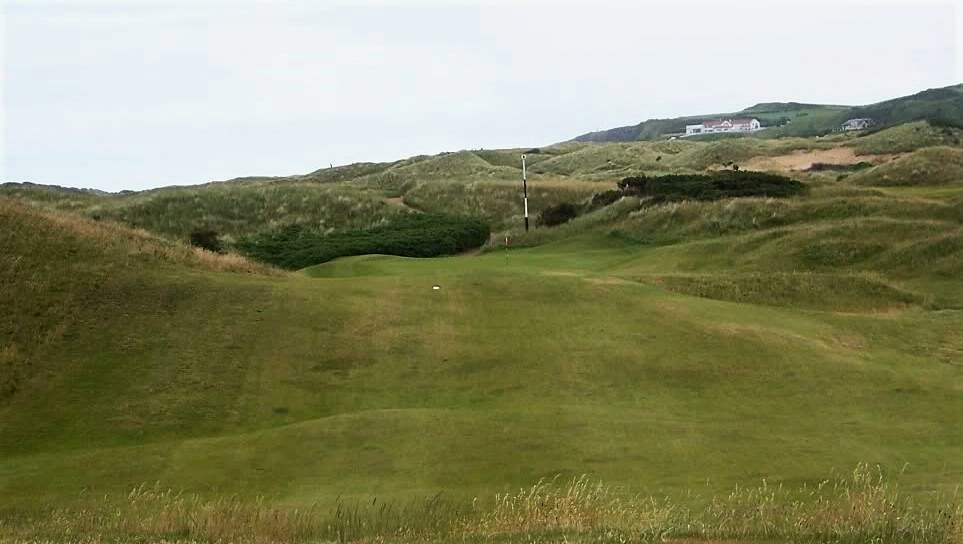

A look at the approach from the centre of #9 fairway.
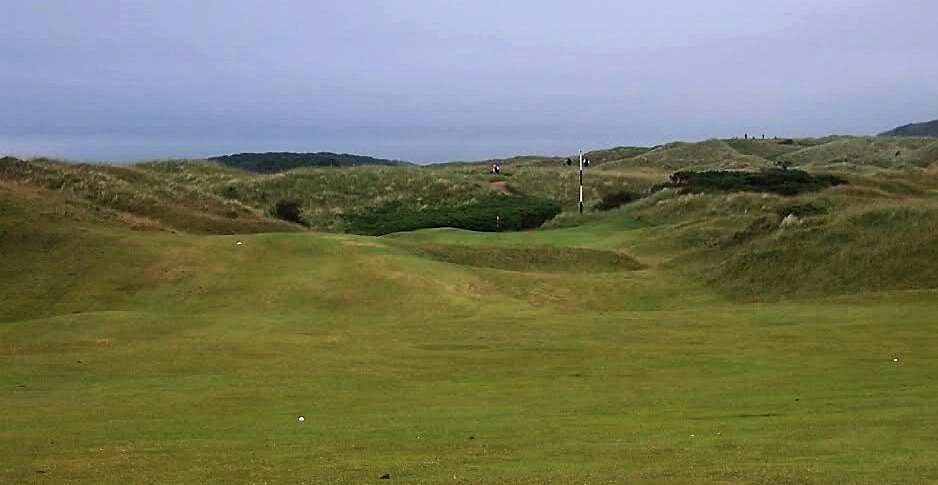
After the 10th I reckon most holes would fail to make a favourable impression.
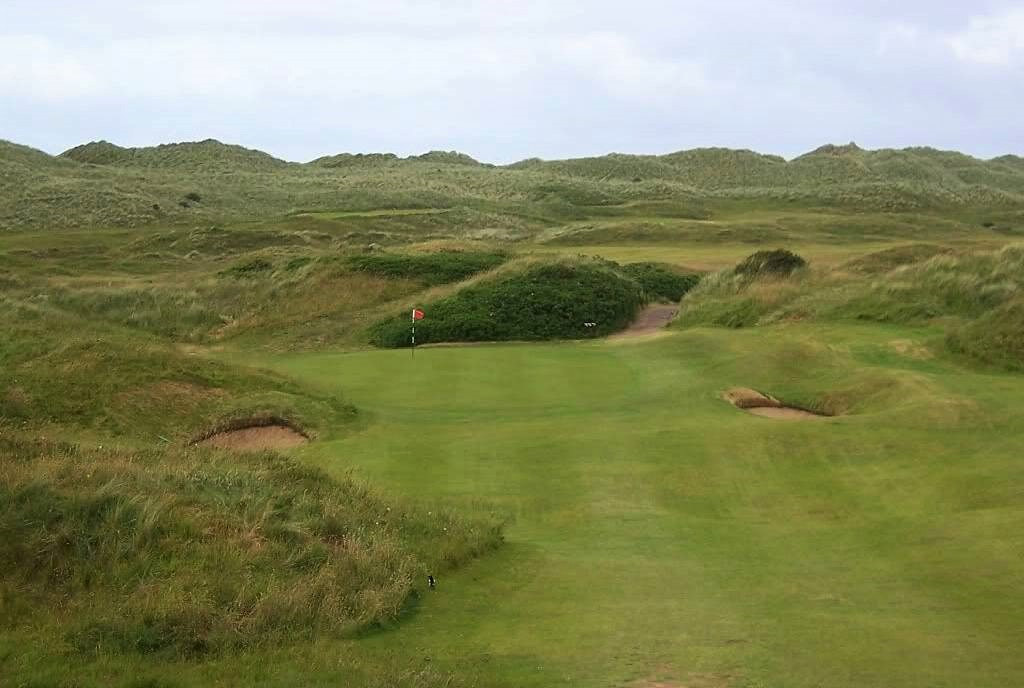
After the relative calm of the short 11th, there is another superb hole. #12 is a long down wind par 4 with one of the best green sites on the course. This photo is taken from high ground above the tee which doesn't offer a view of the left side of the fairway.

The green is angled and tipped to encourage a left to right approach, but the left bunker must be covered to pull of this ideal shot.
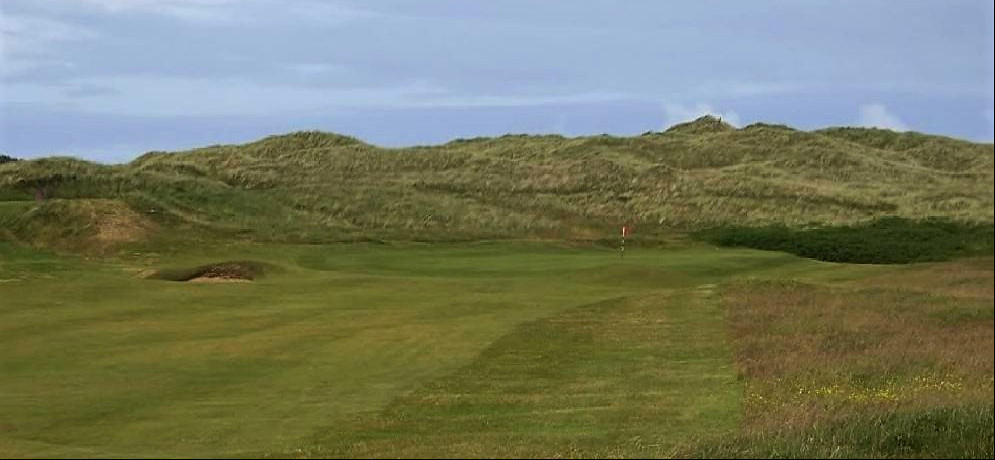
The 13th is the second of the par 4/5s. It doesn't have nearly the interest of the 10th, but like Dunluce's 16th, one must decide if they are going to layup short of the neck or try to crash a wood somewhere near the green.
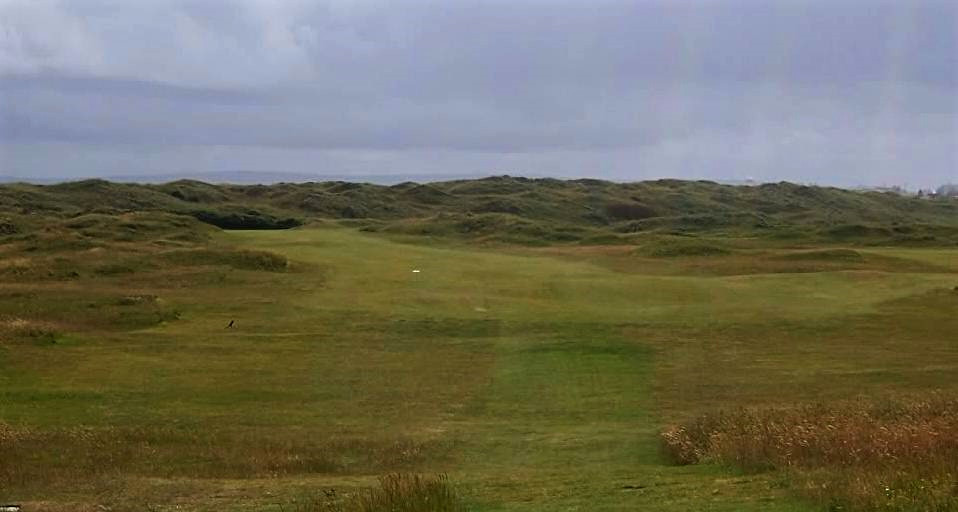
#14 continues the stout golf with another 400+ yarder. The fairway is obscured, but there is generally more room right off the tee than is apparent. Below is a look at the green. I never did figure out how the fairway moves so far right toward that bunker. The fairways looks as if it should move left.
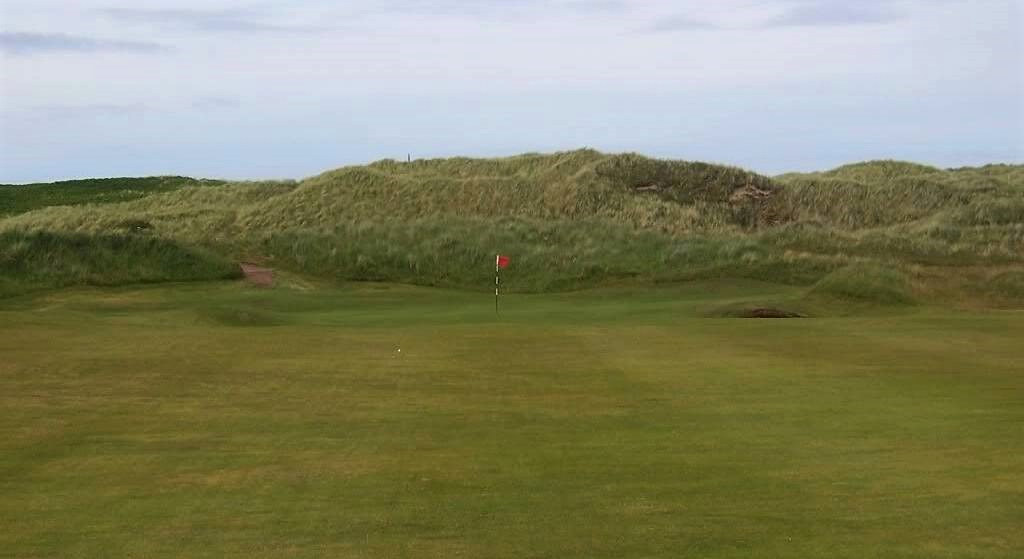
The run for home starts with a terrific short hole. It plays downhill, but couldn't be called a drop shotter.

What little bunkering the Valley does possess is of very high quality. There is a wee drop off to the left of the green which is similar to the right side of #12.
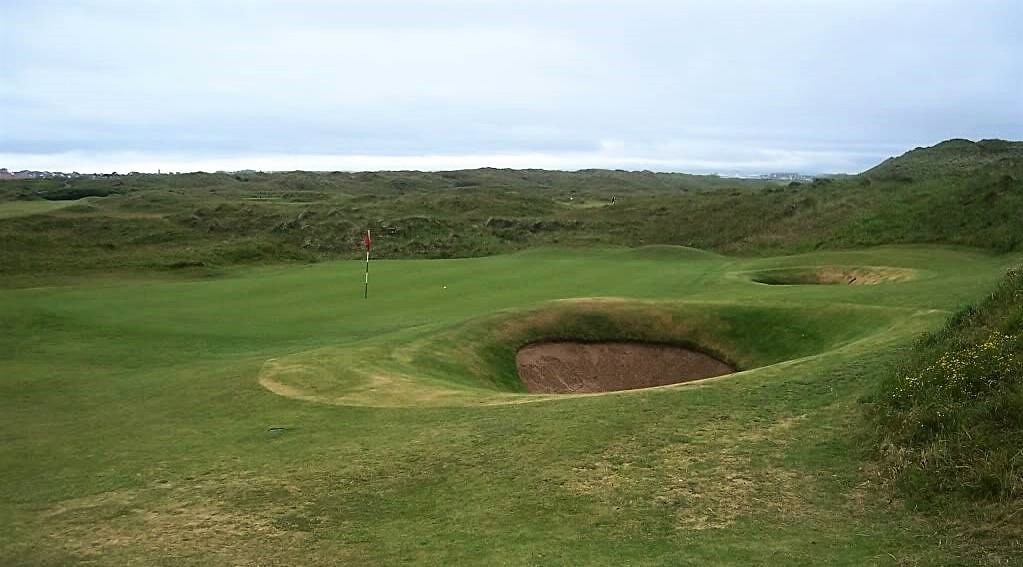
#16 is the last of the short par 4s. It is an odd hole because there is no fairway for the ideal approach from the left. That said, playing into the wind makes it seem as though the bunker is a long carry, but it easier to cover than it appears. This makes driver a dangerous play and seems to go against our natural instinct to bash a ball into the wind. Plus, I often like to see the full hole on doglegs because I think people are naturally drawn to the tiger line.
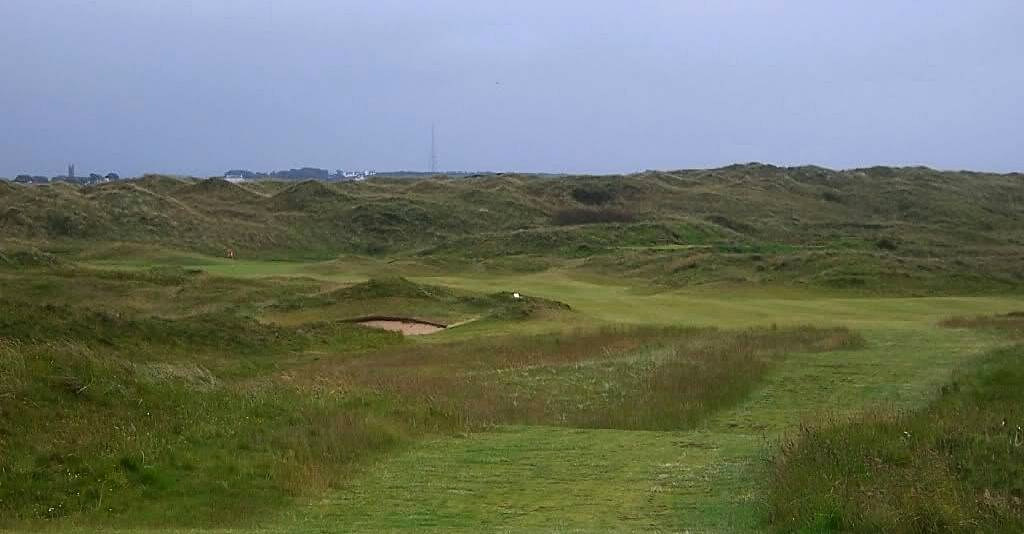
A difficult hole location!

Snaking toward the top level of the course, Colt uncharacteristically fortified this plateau 17th green with bunkers on the front corners. Any slightly weak approach will follow the lay of the land to one or the other. It is interesting how Colt offers an easier approach option to the back right (away from the Sunday hole location and leaving a tricky putt) with its wing back like bumper to cradle a slightly aggressive shot. The course finishes with its last par 3 drop shot. This hole has more interest than the others primarily because more accuracy is required due to the sharp drop short of the green and its into the wind.
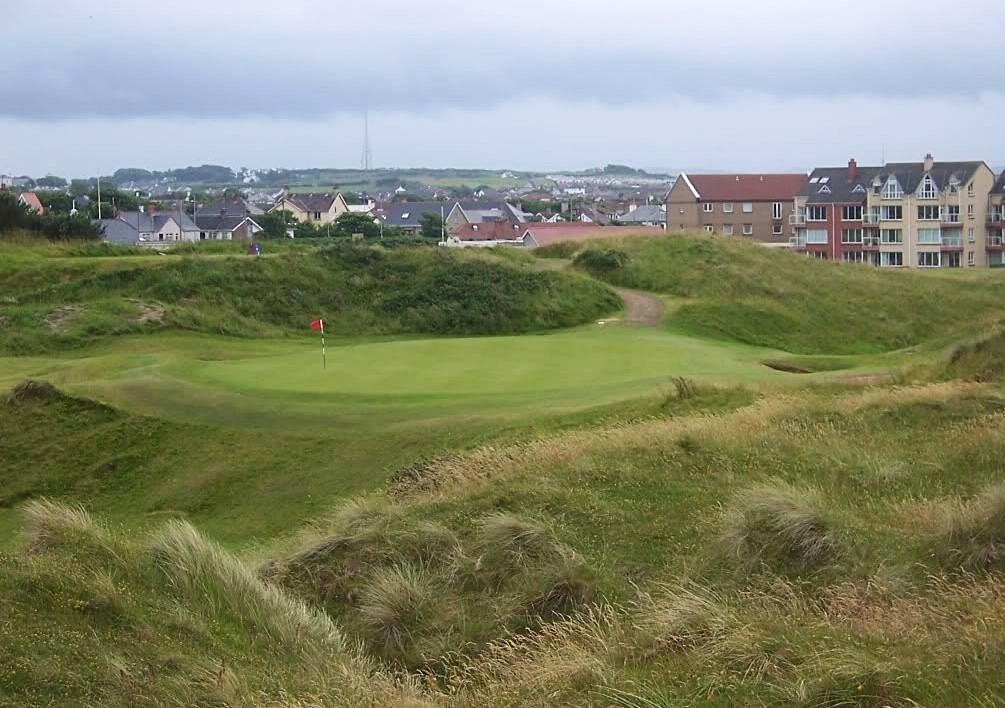
Similar to TOC, when one completes the game they are a long way from the clubhouse and this is slightly irksome. It is a wonder why the house is in its current location. Nevermind, also like TOC, there is an alternative club which opens its doors to visitors - Rathmore GC. It isn't plush, but the beer tastes the same as in the big house and its members are welcoming.
Its plainly obvious that I greatly admire the Valley Links and think it is a charmer in the way Brora and Pennard are. It is easy to leak shots away, but the course offers plenty of opportunity to score well. I would not soon tire of playing this course on weekly basis. 2009
Dunluce Links
www.golfclubatlas.com/forum/index.php/topic,40266.msg846234.html#msg846234Ciao